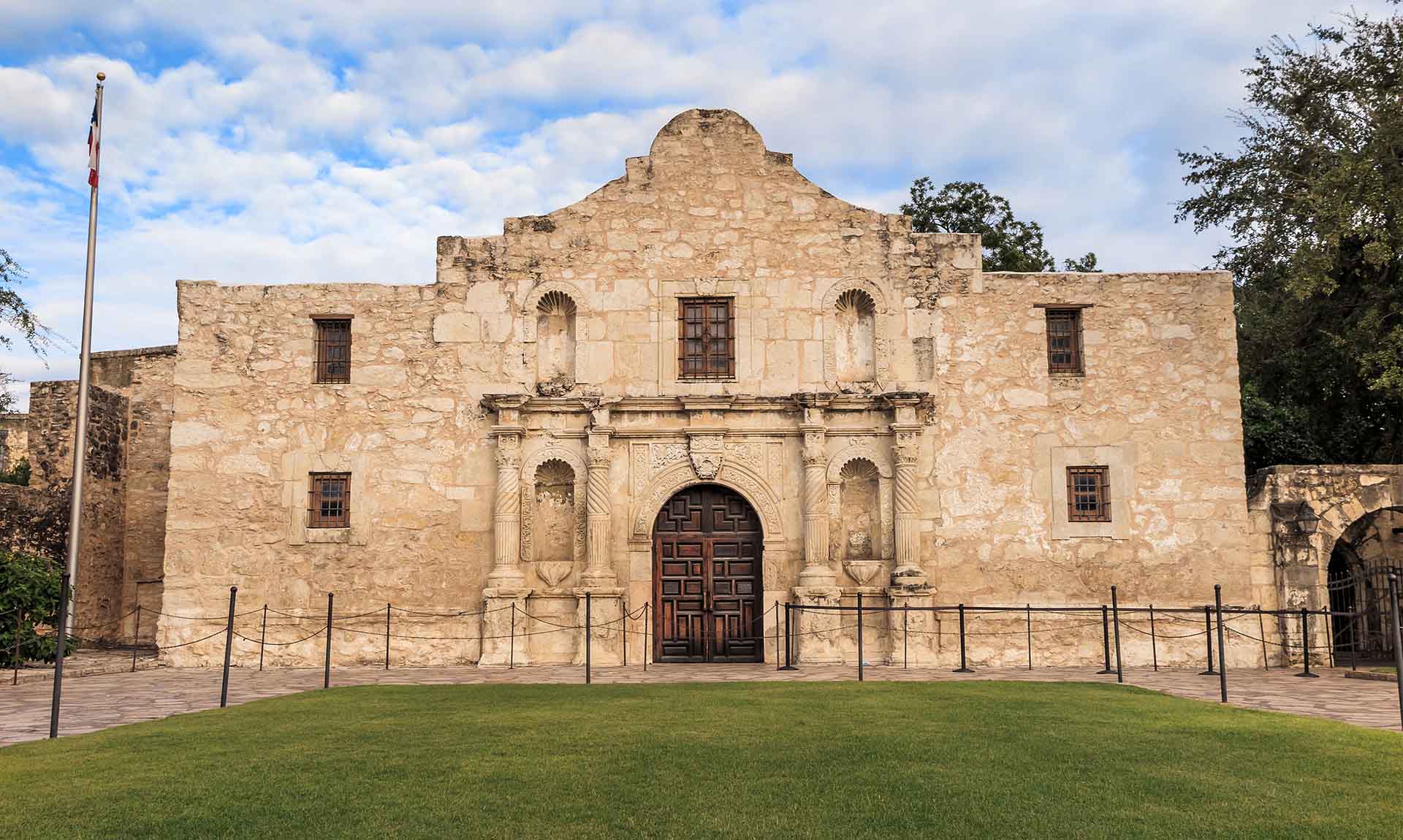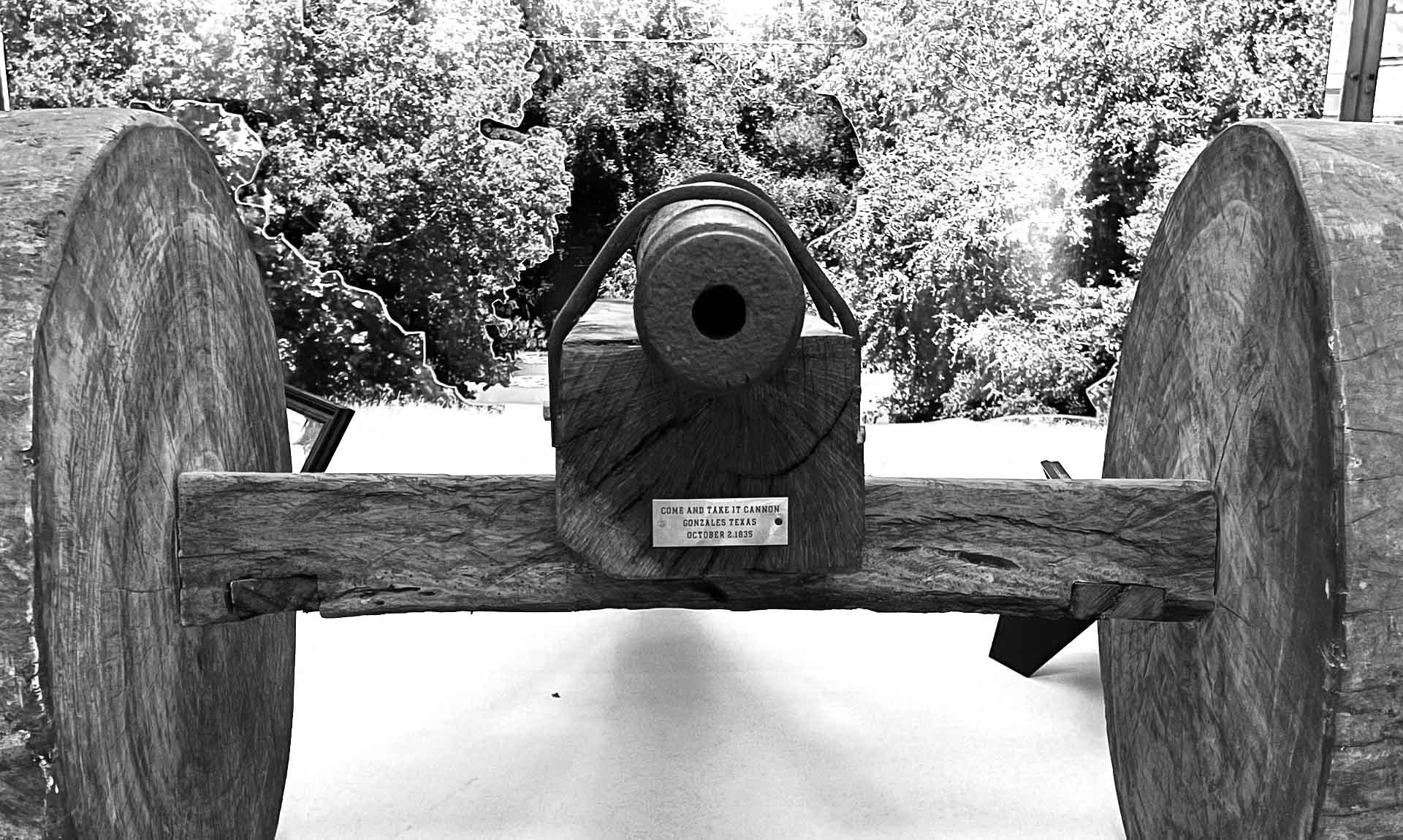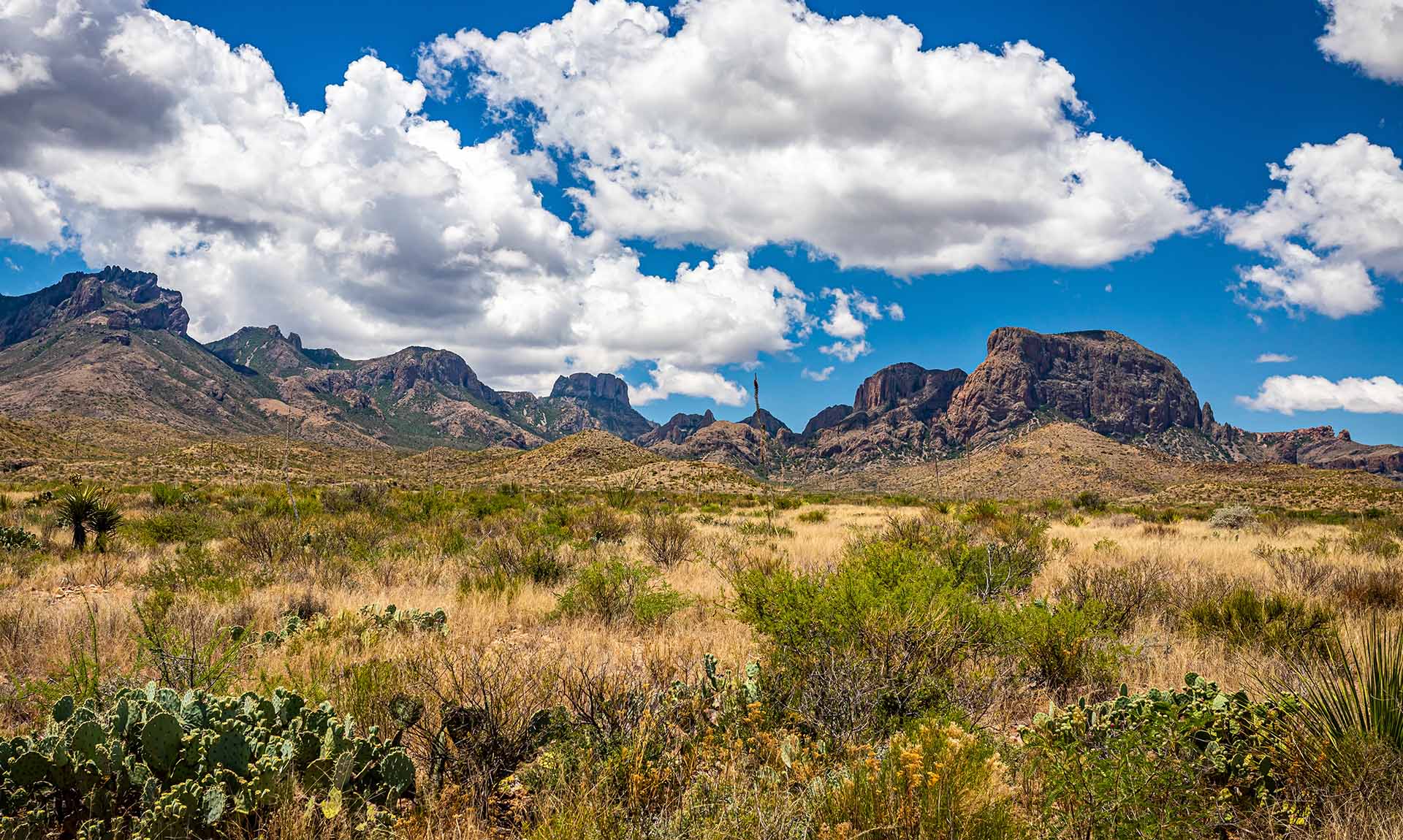
The Alamo: A Tale of Heroism and Sacrifice in the Heart of Texas
The Alamo, a historical landmark nestled in the heart of San Antonio, Texas, is more than just an old mission building. It is a symbol of courage, sacrifice, and the indomitable spirit of freedom. This iconic structure stands as a testament to a pivotal event in American history, the Battle of the Alamo, which played a significant role in the Texas Revolution.
The Alamo’s story is one of resilience and determination, a tale of a small group of men standing against overwhelming odds for a cause they believed in. Let’s take a look into the importance of the Alamo, its historical background, the Texas Revolution, the Texian defenders, the Battle of the Alamo, its enduring legacy, and its significance today.
Historical Background
The Alamo’s history traces back to the 18th century when it was established as a mission by Spanish missionaries. Known originally as Misión San Antonio de Valero, it was one of many missions established by the Spanish in an effort to colonize the region and convert the local Native American population to Christianity. The mission was founded in 1718 by Father Antonio de San Buenaventura y Olivares, who had long advocated for the establishment of a mission in the area to serve as a way station between the existing missions in East Texas and the nearest Spanish settlement in Mexico.
Over the course of the 18th century, the mission community faced numerous challenges, including disease, drought, and occasional conflict with local Apache and Comanche tribes. Despite these hardships, the mission persisted, serving as a center of agricultural production and trade.
By the late 18th century, the mission had begun to decline. Many of the local Native American population had either died from disease or moved away, and the mission was secularized in 1793, meaning it was transferred from the church to civil authority. The buildings were repurposed for use as a military barracks, housing Spanish troops stationed in the area.
The Alamo served as a military outpost during the Spanish rule and later during Mexico’s period of independence from Spain. The building’s transition from a place of peace and conversion to a military stronghold reflects the changing times and the turbulent history of the region. It was during this period that the old mission came to be known as the Alamo, named after the Spanish word for the cottonwood trees that grew in the area and the hometown of the stationed Mexican troops, Alamo de Parras.
In the years leading up to the Texas Revolution, the Alamo played a key role in the political and military events of the region. Its strategic location made it a point of interest for both the Texian settlers and the Mexican government, setting the stage for the pivotal role it would play in the Texas Revolution.
The Texas Revolution
The Texas Revolution was a rebellion against the Mexican government, sparked by a series of political and cultural clashes between the Mexican government and American settlers in Texas. The revolution was a culmination of years of tension and conflict, with issues such as immigration, slavery, and local rights at the forefront.
The Alamo played a crucial role in the early stages of the revolution, serving as a fortress for the Texian rebels. Its strategic location in San Antonio made it a key point of contention between the Texian and Mexican forces. The Alamo was seen as a stronghold that could potentially control access to the interior of Texas, making it an asset for both sides.
In the months leading up to the revolution, the Alamo was occupied by a small group of Texian soldiers. As tensions escalated, the Texian forces at the Alamo were reinforced, in anticipation of a potential attack by Mexican forces. The Alamo’s role as a military outpost made it a symbol of the Texian resistance and their determination to stand against Mexican rule.
The political and social climate in Texas during this period was fraught with tension, as the Texians sought independence from Mexico. The Alamo, with its fortified walls and strategic location, became a focal point of this struggle for independence. The siege and subsequent Battle of the Alamo highlighted the resolve of the Texian forces and their willingness to fight for their rights and freedoms.
The Battle of the Alamo, although a military defeat for the Texians, had a significant impact on the course of the Texas Revolution. The bravery and sacrifice of the Alamo defenders galvanized the Texian forces, inspiring them to continue their fight for independence. The battle also attracted attention from the United States and other countries, bringing international recognition to the Texas Revolution. The rallying cry “Remember the Alamo!” became a symbol of the Texian struggle for independence, embodying their determination and resilience.
The Texian Defenders of the Alamo
The Alamo was defended by 189 Texian soldiers, a diverse group of men united by a common cause. These men, known as the Alamo Defenders, were a mix of Texian settlers, adventurers, and volunteers from the United States. Among them were several key figures whose bravery and leadership left an indelible mark on the story of the Alamo.
- William B. Travis: was a 26-year-old lawyer who had moved to Texas in search of a fresh start. He quickly became involved in the Texian cause and was appointed a lieutenant colonel in the Texas Army. As the commander of the Texian forces at the Alamo, Travis displayed remarkable courage and determination. Despite being vastly outnumbered, he refused to surrender and inspired his men to hold out against the Mexican forces for 13 days. His “Victory or Death” letter, seeking reinforcements and expressing his resolve to never surrender or retreat, has become a symbol of heroism and sacrifice.
- Jim Bowie: known for the famous Bowie knife, was a renowned frontiersman and adventurer. Born in Kentucky, Bowie had made a name for himself through his exploits in the American South and West. In Texas, he became a leader among the American settlers and played a key role in the Texas Revolution. During the Battle of the Alamo, despite being severely ill, Bowie continued to lead and fight. His tenacity and fighting spirit made him a legendary figure in the story of the Alamo.
- Davy Crockett: a former congressman from Tennessee, was a celebrated frontiersman and folk hero. Known for his charismatic personality, sharp wit, and storytelling prowess, Crockett was a beloved figure in American folklore. After losing his seat in Congress, Crockett journeyed to Texas to join the fight for independence. At the Alamo, Crockett and his men, known as the “Tennessee Mounted Volunteers,” fought valiantly against the Mexican forces. Crockett’s bravery and his tragic death at the Alamo have further cemented his status as an American legend.
These men, along with the other defenders, stood together in the face of overwhelming odds. Their collective courage and sacrifice have made the Alamo a symbol of resistance and the Texian struggle for independence.
The Battle of the Alamo
The Battle of the Alamo was a 13-day siege by Mexican forces under the command of General Antonio López de Santa Anna. Despite being heavily outnumbered, the Texian defenders held their ground, demonstrating remarkable courage and resilience.
The battle began on February 23, 1836, with the arrival of Mexican troops in San Antonio. The Mexican army, numbering in the thousands, surrounded the Alamo, trapping the Texian defenders inside. The Texians, led by William B. Travis and Jim Bowie, were a diverse group of volunteers, including frontiersmen, adventurers, and settlers, who had chosen to make a stand against the Mexican forces.
Despite their dire situation, the Texian defenders refused to surrender. Travis penned a letter seeking reinforcements and expressing his resolve to “never surrender or retreat.” This letter, known as the “Victory or Death” letter, was a testament to the determination and spirit of the Texian defenders.
For the next 13 days, the defenders of the Alamo resisted the Mexican assault. They repelled multiple attacks, inflicting heavy casualties on the Mexican forces. However, on March 6, the Mexican forces launched a final assault. The defenders fought valiantly, but they were ultimately overwhelmed. All of the Texian defenders, including Travis, Bowie, and Davy Crockett, were killed in the battle.
The Battle of the Alamo had a profound impact on the Texas Revolution. Although it was a military defeat for the Texians, the bravery and sacrifice of the Alamo defenders galvanized support for the Texian cause. News of the battle spread throughout the United States, attracting volunteers and support for the Texian struggle for independence. The rallying cry “Remember the Alamo!” became a symbol of the Texian resistance and their determination to achieve independence. The Battle of the Alamo, with its story of courage and sacrifice, has become an enduring part of American history.
The Legacy of the Fallen Defenders
The defenders of the Alamo, though they fell in battle, left behind a legacy that would resonate through the ages. Their collective bravery and sacrifice became a rallying cry for the Texas Revolution: “Remember the Alamo!” This phrase, echoing through the ranks of the Texian army and across the United States, symbolized the spirit of resistance and the fight for independence.
The fate of the defenders, their place of burial, and the circumstances of their death have been subjects of historical research and debate. After the battle, General Santa Anna ordered the bodies of the defenders to be burned. Their ashes were reportedly collected and interred at the San Fernando Cathedral in San Antonio, although this has been a subject of controversy and speculation.
Despite the tragic end, the sacrifice of the Alamo defenders was not in vain. The Battle of the Alamo served to galvanize the Texian forces, leading to a surge in enlistments and a renewed determination to win independence. The story of the Alamo defenders, their stand against overwhelming odds, and their ultimate sacrifice, stirred the hearts of many, leading to increased support for the Texian cause.
The impact of their sacrifice extended beyond the immediate aftermath of the battle. The “Remember the Alamo!” rallying cry continued to inspire the Texians in their fight for independence, and it played a significant role in the decisive victory at the Battle of San Jacinto, where Texas won its independence from Mexico.
Today, the defenders of the Alamo are remembered as heroes in Texan and American history. Their story serves as a reminder of the cost of freedom and the courage of those who fight for it. Monuments and memorials have been erected in their honor, and their tale is taught to generations of Americans as a testament to the spirit of resistance and the pursuit of liberty. The Alamo itself stands as a monument to these men, a symbol of their courage and sacrifice, and a testament to their enduring legacy.
The Alamo as a Symbol
The Alamo has transcended its historical roots to become a symbol of the struggle for independence and the spirit of resistance. Its story, marked by courage, sacrifice, and resilience, resonates deeply with the ideals of freedom and self-determination.
The Alamo’s transformation from a mission to a fortress, and finally to a symbol of resistance, reflects the changing times and the enduring spirit of the Texian people. The Battle of the Alamo, despite its tragic outcome, showcased the determination of the Texian defenders to stand their ground, even in the face of overwhelming odds. This act of defiance and courage has been immortalized in the annals of American history, making the Alamo a symbol of resistance and the struggle for independence.
The Alamo also symbolizes the blending of different cultures and histories. Its origins as a Spanish mission, its role in the Mexican period of Texas history, and its significance in the Texas Revolution reflect the rich tapestry of cultures that have shaped Texas and the United States.
Today, the Alamo continues to stand as a symbol of courage and sacrifice. It serves as a reminder of the past, a testament to the human spirit, and a beacon of the enduring values of freedom and independence. The story of the Alamo, its defenders, and their sacrifice continues to inspire and resonate with people across generations, making the Alamo a timeless symbol in American history.
The Alamo Today
Today, the Alamo is a popular historical site and tourist attraction, drawing visitors from around the world. It serves as a tangible link to the past, allowing visitors to walk in the footsteps of the Alamo Defenders and experience a piece of American history. The Alamo complex includes the iconic church, the Long Barrack Museum, which houses exhibits on the Texas Revolution and the history of the Alamo, and the Alamo Gardens.
However, the Alamo is not just a place for tourists. It is a site of ongoing historical research and archaeological investigation. Scholars continue to study the Alamo to gain a deeper understanding of its history and the people who lived and died there.
In recent years, there have been efforts to revitalize the Alamo and enhance its visitor experience. These include plans for a new museum and visitor center, as well as improvements to the surrounding plaza. These initiatives aim to ensure that the Alamo continues to engage and educate visitors for generations to come.
The Alamo remains a significant part of American and Texan identity. Its story continues to resonate with people across generations, serving as a reminder of our shared history and the values that define us. The Alamo, with its iconic facade and its place in American folklore, continues to stand as a testament to courage, sacrifice, and the enduring spirit of freedom. Plan your trip today!












